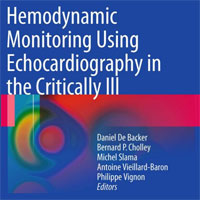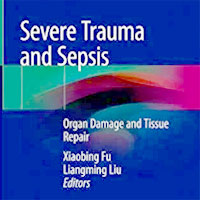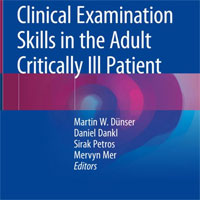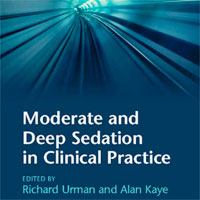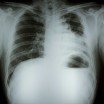
External validation of a biomarker and clinical prediction model for hospital mortality in ARDS
Mortality prediction in ARDS is important for prognostication and risk stratification. However, no prediction models have been independently validated. We validated a mortality prediction model for ARDS that includes age,... read more

Validation of the Vasoactive-Inotropic Score in Pediatric Sepsis
Secondary retrospective analysis of a single-center sepsis registry. Vasoactive-Inotropic Score in pediatric sepsis patients is independently associated with important clinically relevant outcomes including ICU length of... read more

Safety Hazards During Intrahospital Transport
A prospective observational study. Data from participant observations of the intrahospital transport process were collected over a period of 3 months. Findings suggest that intrahospital transport is a hazardous process for... read more

Acute Lung Failure – Our Evolving Understanding of ARDS
Since Laennec described the gross pathology of idiopathic anasarca of the lungs in 1821, mortality due to the acute respiratory distress syndrome has been vastly reduced. Yet the poor subsequent condition of ARDS survivors... read more

Most ICU Patients Underfed
A large international multicentre cohort study shows that most of the patients are underfed during their ICU stay. In their findings published in the journal Clinical Nutrition, researchers say most of the patients in intensive... read more

The Glass Door of the Patient Room
Poor communication among health-care providers is cited as the most common cause of sentinel events involving patients. Our goal was to create a novel, easily accessible communication device to improve ICU patient care. Due... read more

Reduction of Laboratory Utilization in the ICU
In our academic ICU, there is excess ordering of routine laboratory tests. This is partially due to a lack of transparency of laboratory-processing costs and to the admission order plans that favor daily laboratory test orders.... read more

SOFA Effective Pediatric Version
An age-adjusted version of the Sequential Organ Failure Assessment score for sepsis has been found to be at least as good, if not better than, other pediatric organ dysfunction scores at predicting in-hospital mortality.... read more
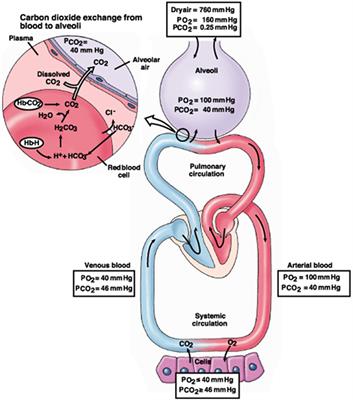
Hyperventilation Therapy for Control of Post-Traumatic Intracranial Hypertension
During traumatic brain injury, intracranial hypertension (ICH) can become a life-threatening condition if it is not managed quickly and adequately. Physicians use therapeutic hyperventilation to reduce elevated intracranial... read more

Stress Ulcer Prophylaxis in the ICU (SUP-ICU)
Stress ulcer prophylaxis (SUP) is standard of care in the intensive care unit (ICU), however the quantity and quality of evidence is low and potential harm has been reported. The aim of the SUP-ICU trial is to asses the overall... read more

Double Mortality Risk for Depressed Heart Disease Patients
Among 24,000 patients with heart disease studied over many years, those who suffered from depression were at twice the risk of dying, according recently published findings from Intermountain Healthcare. A statistical analysis... read more

Can Electronic Alerts Help Identify Sepsis in Sick Children?
A two-step electronic alert system successfully reduced missed sepsis diagnoses in children by 76 percent. The new pediatric protocol, which incorporates the use of vital signs, risk factors, and a clinician's judgment,... read more

Avoiding Intubation
Review the basic principles and physiology of Non-Invasive Ventilation and High-Flow Oxygen Systems. Critical Care Summit talk by William Bender, MD, Assistant Professor of Pulmonary and Critical Care Emory University School... read more

Prescribed Morphine Milligram Equivalents of Opioids by County
Despite reductions in opioid prescribing in some parts of the USA, the amount of opioids prescribed remains high relative to 1999 levels and varies substantially at the county-level. Given associations between opioid prescribing,... read more

A Brief Review of Troponin Testing for Clinicians
Current American College of Cardiology and American Heart Association guidelines state that troponin is the preferred biomarker for diagnosing acute myocardial infarction (MI). Troponin T (TnT) and I molecules have amino... read more

Consideration of the Intracranial Pressure Threshold Value for the Initiation of TBI Treatment
Monitoring of intracranial pressure (ICP) is considered to be fundamental for the care of patients with severe traumatic brain injury (TBI) and is routinely used to direct medical and surgical therapy. The cerebral circulation... read more

This Startup Could Revolutionize How We Fight Infectious Diseases
Karius Test has raised $50 million to develop a novel technology that can detect more than 1,000 infectious diseases, without requiring the usual trial-and-error tests. The test is expensive at $2,000, and is meant for use... read more


